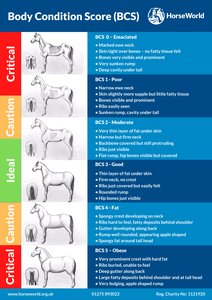Maintaining a healthy weight is a vital part of good horse care. However, when you see your horse every day, it’s easy to overlook gradual changes in their body condition. Subtle weight gain or loss can often go unnoticed until it becomes a more serious issue. Regular monitoring helps keep your horse in the best condition and prevents long-term health problems.
The best ways to monitor horse weight
The most accurate way to measure your horses weight is by using an equine weigh bridge, but this is an expensive piece of equipment that most horse owners do not have access to - that’s where a weigh tape comes in. A weigh tape is a specially marked tape measure designed to estimate your horse’s weight based on their heart girth measurement.
While weigh tapes won’t give an exact figure, they provide a reliable estimate. When used consistently, it allows you to track changes in your horse’s weight over time. For the clearest picture of your horse’s condition, combine weigh tape results with Body Condition Scoring (BCS), which assesses fat coverage by sight and touch. Together, they create a practical system for monitoring weight and overall health.
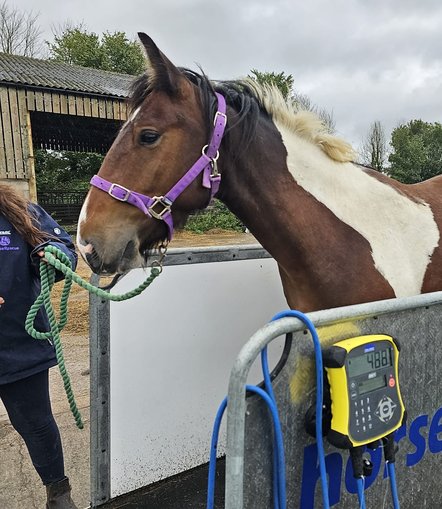
Whyregular weigh taping matters
- Subtle changes are easy to miss when you see your horse daily.
- Regular taping (weekly or monthly) helps you spot weight gain or loss early.
- Using the same tape consistently provides a clear record of trends in your horse’s weight over time.
- Weigh tapes are most effective when paired with BCS, as together they highlight both numerical changes and physical condition.
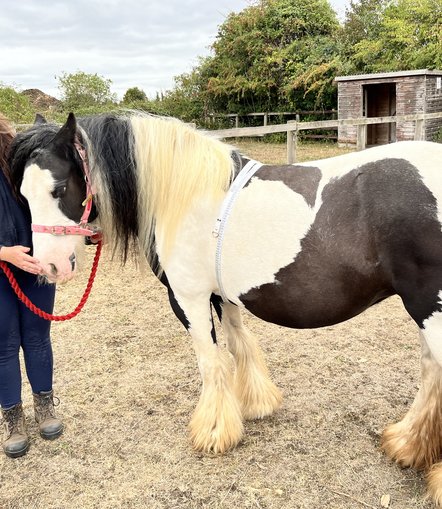
How to use a weigh tape
1. Stand your horse square with head and neck facing forward.
2. Place the tape over the horse’s back and underneath the stomach, just behind the forelimb (where the girth would sit).
3. Position the top of the tape at the base of the withers – it will sit at a slight angle.
4. Pull the tape firmly (but not tightly) around the barrel so it sits snug against the body.
5. Take the measurement where the arrows meet, making sure you’re reading from the kg section of the tape.
Tip: Different types of weigh tapes can vary slightly, so stick to the same one each time for consistency. It is also important that the same person measures the horse each time to improve consistency.
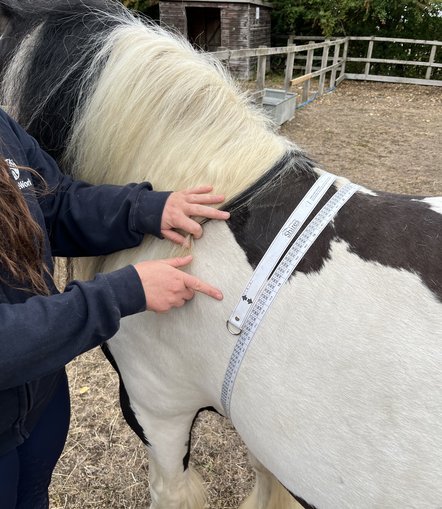
Understanding Body Condition Scoring (BCS)
The Body Condition Score (BCS) is a standardised system that allows you to assess fat coverage, muscle development, and overall fitness in horses. While any system will have some subjectivity, using a consistent method helps track changes over time. This allows horse owners to assess levels of body fat, highlight potential health issues (linked to fat deposits) and evaluate muscle tone and development. While weigh taping provides a number, BCS helps you assess fat distribution across your horse’s body.
This involves feeling key areas such as the crest, ribs, shoulders, and hindquarters, and scoring them on a 0–5 scale:
- 0 = Very Poor
- 3 = Good/Ideal weight
- 5 = Obese
For accuracy, divide the horse into three sections (neck, body, hindquarters), score each individually, then take an average. Half scores (e.g. 3.5) can be used where your horse falls between categories. Avoid including the stomach in your assessment, as bloating or gut fill can give a misleading impression.
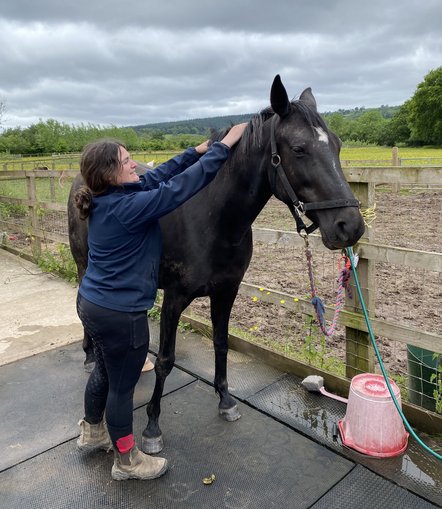
Key areas to access
Neck: Locate the jugular groove. About one hand’s width above this, you should be able to feel the cervical spine along the neck. Run your hand down the neck toward the shoulder. You should feel the spine of the scapula and may notice fat pads before or after it. Look at the neck and check for a fat fold on the crest, this is a defining line for fat deposit. Feel the crest and check whether any fat deposits are soft or hard.
Body: Begin at the ribs, palpating them on a diagonal from the top of the shoulder toward the stifle. Focus your attention on the front half of the rib cage (as these are a better indicator for fat deposits). Along the spine, observe whether the back musculature slopes away. Run your fingers down the midline, palpating the dorsal spinal processes and noting any “gutters” along the back.
Hindquarters: Running your hands over the quarters, check if you can feel the hip bones. At the highest point between the hips, assess whether the bone is palpable. Look for gutters and any bulges or distention of skin and fat. Evaluate whether there is definition around the hamstring and overall musculature. Viewing from behind, notice any gutters between the hips and above the dock. Move the tail to check for a thigh gap, which can indicate underweight horses.
Together, weigh taping and BCS provide a practical and reliable way of keeping your horse at a healthy weight.

Tips for accurate assessment
- Always use the same method and areas to track changes consistently.
- Perform assessments regularly to catch changes in condition early.
- Combine visual observation with palpation for the most accurate results.
- Be honest about your horse’s score
By following this approach, you can monitor your horse’s condition more effectively, target feeding or exercise adjustments, and maintain their health and wellbeing.
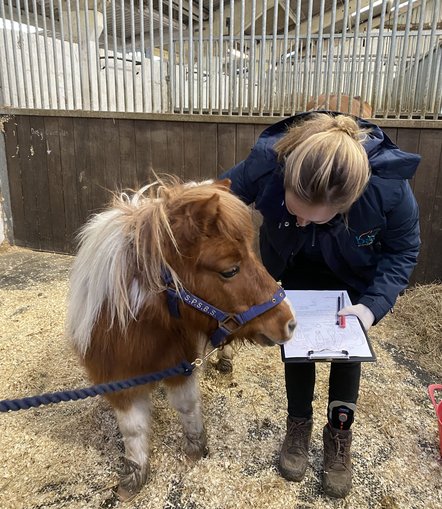
Using weigh tapes is an affordable, easy-to-use, and effective tool for keeping track of your horse’s weight. When combined with honest Body Condition Scoring, it can help you make informed decisions about your horse’s management and care to ensure they remain in the best condition possible.
If you would like to download our Body Condition Scoring chart, please click the PDF below.

